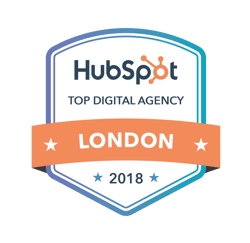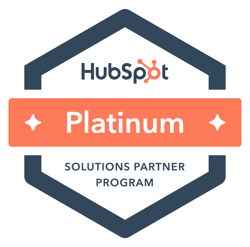
"Our contact database is the lifeblood of our event business, without it, we are nothing"
Agree? If you do, are you really getting the most out of your prospect and customer database?
You are not alone. When I ask this question to CEOs and leaders of the event industry, 9 out of 10 people give me a categorical "No" or a "I don't think we do, certainly we don't know enough from our contacts; we could be doing more with it".
If your sentiment (or that of your boss) is aligned with the statements above, read on if you want to fix that for good.
I want to share the 8 key facts you must know about the contacts and companies living in your database. If you don't know this you're potentially leaving lots of money on the table!
Use this list of facts to sanity check the health of your database. By the end of it, if you think you are falling short or in fact failing (no judgement) I will happily share with you a database protocol template that you can make your own and build from.
- Why it is important to collect/know this information
- How to tag/classify your contact database
- How you can use this information to drive sales and
- What tools exist right now to help you solve it (including a free template)
Knowing these key facts will ensure that: you are on top of your data, you can tailor your sales approach, accelerate your sales process and unearth new sales opportunities:
1. Spend: How much a company has spent with you and when
Sounds pretty basic and obvious, but the truth is that many event owners do not know exactly how much money each customer has spent with them. Surely you would be able to find out with enough digging but this information should be available to you and your sales people on the spot.
| How to tag this in your database: | Your CRM or Registration System, will certainly have a field on your database called "Revenue" and/or "Total Spend" |
| How to use it to drive revenue: |
|
2. Type of engagement or Type of customer
At its most basic level, out of the whole universe of your database there will be two types of sales conversations:
- Attendees = Generally end-users coming to your event with the purpose of learning, finding solutions to their problems and to network
- Sponsors/Exhibitors = Generally they have a solution to the problems attendees have, or something that will improve/enhance their day to day jobs and come to the event with the main objective of either networking, generating leads, expose their brand to their market
Some event businesses have a third type of "sales conversation" and it will be the speakers, but this is ultimately down to each individual business model. Some speakers are paid, most are not paid and in some cases they pay to speak as it is built in as part of a sponsorship/exhibiting package.
If you are not segmenting and driving separate campaigns with different key messages for each, SHAME ON YOU! and probably there is no point for you to continue reading as the rest of this post just won't be relevant.
| How to tag this in your database: | Header: Type of engagement / Customer Type Options: Attendee - Sponsor/Exhibitor Only tag contacts if they are customers |
| How to use it to drive revenue: |
|
3. Conversations: Who in your event organisation is or has spoken to the individual/company
"Errrrrr sorry, my company is already speaking and our team is even attending. And you're trying to sell me sponsorship??"
Sales and content teams working off spreadsheets results in making your business look extremely unprofessional. Any event business needs to have their data organised and have the ability to see if anyone in the business is speaking or has spoken to individuals and companies and what have been the nature of those conversations. This is so crucial and doesn't really need justifying - no one wants to look stupid in front of their audience!
| How to tag this in your database: |
If you use a CRM you will have a timeline of notes, emails, tasks logged against each contact/company/opportunity. |
| How to use it to drive revenue: |
|
4. Contact's interests: What products are they likely to buy from you?
Let's be real, you might be running an event for the [marketing industry], but depending on a variety of factors based on their demographics, their digital behaviour, the content they respond to or the answers they give you through direct interviews/ surveys, you will be able to derive their interest in [SEO, Email Marketing, Strategy, Web design etc.]
[Same would apply for your relevant industry]
This in turn will allow you target specific products, messages, offers to them.
This is particularly useful for matching attendees with exhibitors/sponsors or serving specific campaigns for advertisers/sponsors of your online community.
| How to tag this in your database: |
|
| How to use it to drive revenue: |
|
5. Geography: Where are your contacts located? Where are your contacts engaging from?
I get it, sometimes organisations do not have or did not ask this information when collecting the database. Now there is no excuse as you can derive this information by checking the IP logs on your email marketing system. Mailchimp and HubSpot for example will log location of your submitted forms.
So even if you don't have this information, it will be collected by your email marketing platform and it needs to be leveraged efficiently.
This is very important, because this will allow you to do your most basic segmenting and reporting on your database, which is crucial.
| How to tag this in your database: |
Automatically tagged by your email system or marketing automation tool |
| How to use it to drive revenue: |
|
6. Buyer Personas
If you are not running campaigns based on your buyer personas then you're pretty old school. Your buyer personas will be a combination of their demographics and psychographic profiles.
Essentially your event will have at least two obvious buyer personas (John the buyer, Peter the seller), but you will have at most 4 to 5 types of buyer personas for your event or industry vertical if you focus on one particular one. Having your team talking and understanding buyer personas will unequivocally drive better response in your marketing and better sales conversations. GUARANTEED.
Download our guide to building buyer personas if you are new to it.
| How to tag this in your database: |
|
| How to use it to drive revenue: |
|
7. Level of engagement (a.k.a. Lead Score): Are you having a one or two-way conversation?
Did they fill in a form, call you, enquire, were passed on to you as a referral or responded to a survey?
Have they actually ever opened an email from you or answered your calls?
Remember they might not respond to your emails or calls, but potentially they are visiting your site or engaging with you or your brand on social media channels.
What is important is: if they are not engaging, they are dead leads and not worth having on your database. You can still use these contacts to create look alike audiences for remarketing - making the most of dead data.
| How to tag this in your database: |
If you use a CRM or marketing automation system you will have many fields automatically being filled with different engagement criteria which will help you to trigger automation campaigns or tailored marketing/sales messages. See: Mailchimp, HubSpot, Pardot many different engagement fields you they already have for you. Ultimately, the level of engagement of a contact from your database is determined by the lead score. Header: Lead Score
|
| How to use it to drive revenue: |
|
8. Timing: When are they engaging with you?
Critically important, because the speed in which you engage with your contacts is critical to enhance sales.
Having spoken to a top marketing executive from a key media player recently, she said they follow up ALL form submissions within 30 minutes, with the angle of being a customer service call "checking the information was received okay and if there were any questions".
In addition, this is an extremely useful tool to manage your database hygiene and level of engagement of your contacts.
Having someone visiting your site 8 times over a period of 1 year is very different to one visiting it 8 times in the last 2 days.
The former denotes loyalty, the latter denotes propensity to buy or high levels of interest.
| How to tag this in your database: |
If you use a CRM or marketing automation system you will have this taken care of, as the systems will put time stamps to log the recency of certain actions. |
| How to use it to drive revenue: |
|
In Conclusion
As an event business leader, you need to be 100% certain that you are getting the most out of your database. At least you need to know that the information is there for when you need it or want to use it to benefit your bottom line.
If you don't have this certainty, you are very likely leaving money on the table. While keeping the hygiene of your database in top form falls under the responsibility of your marketing team, it is your responsibility that your marketing team is looking beyond just clicks and bounces!
In this innovative age of marketing, it's just not acceptable that there are still event businesses using excel sheets to manage their sales processes. If they have a CRM, some don't have basic processes and procedures to manage and derive critical information from their databases.
Get a grip of the state of your database - it's the soul and foundation of any successful event business. Take action. Download our checklist and kick-starter "Database Protocol Sheet" or "Database Schema" as some techy chaps like to call it. Leave it not to chance.







Do you have any comments?